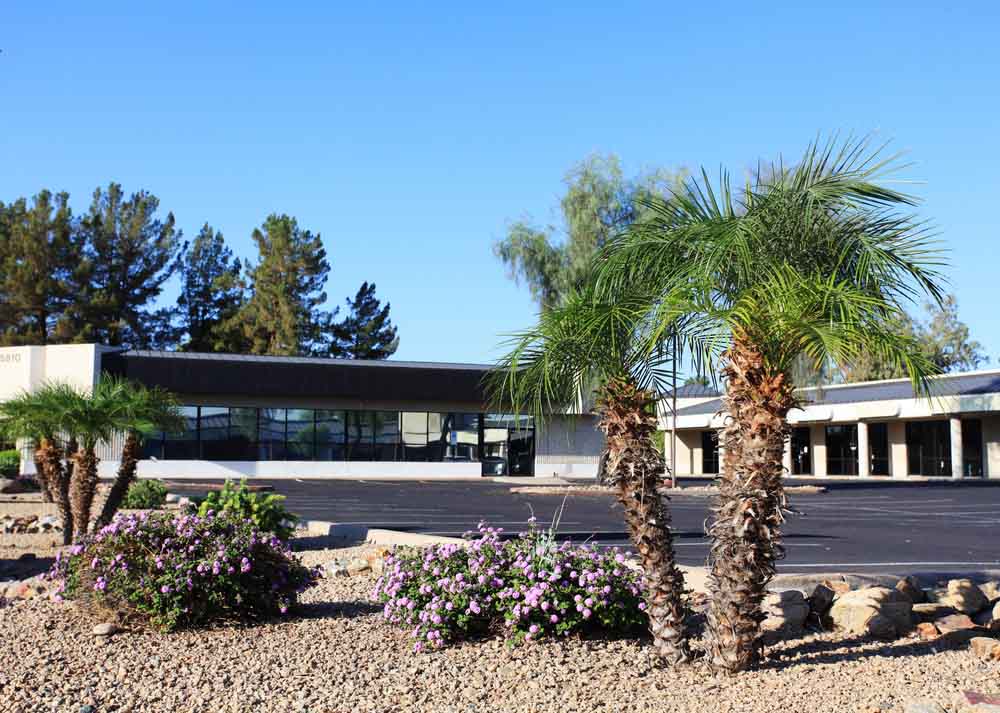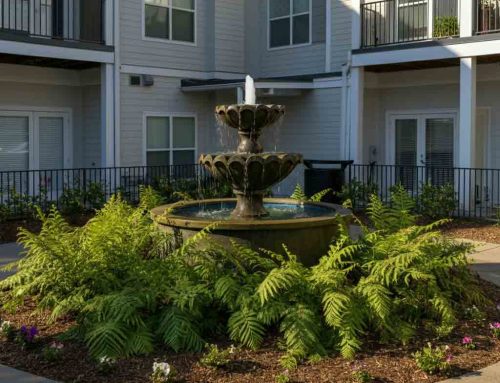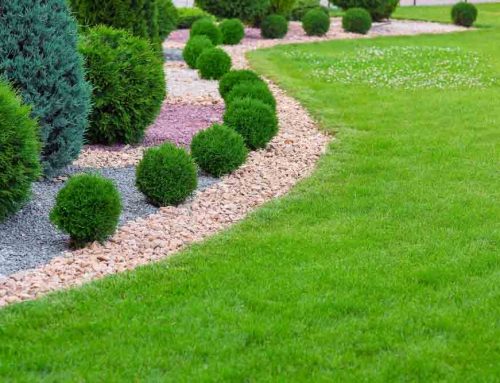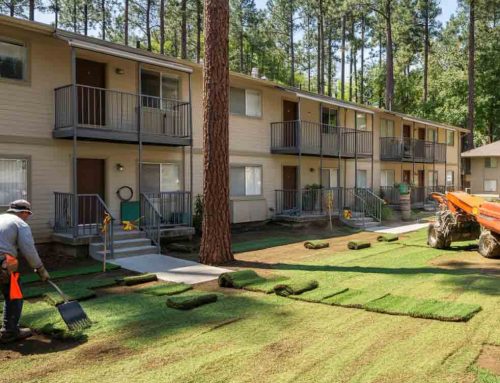Pugh’s Earthworks
Xeriscaping is a sustainable landscaping technique that uses plants that require little or no supplemental water once they are established. Xeriscaping focuses on using plants that have a low water requirement and attract beneficial insects to the garden. Plants used in xeriscaping include succulents, cacti, meadow rue, sagebrush and yucca. Grasses used in xeriscaping include buffalo grass and saw-tooth oak. Flowering shrubs and trees that work well for xeriscaping include aloe vera, hibiscus and coral bean. Rocks used in a xeriscape are typically smaller than those used in other types of landscaping because they do not retain as much heat.
It is an environmentally friendly landscaping technique. It involves using native plants and rocks to create a landscape that requires less maintenance and water, thereby conserving natural resources. Xeriscaping can reduce your carbon footprint by reducing your use of fossil fuels and pesticides. You will also be contributing to the health of our planet by reducing storm water runoff into rivers, streams and lakes (which often contains chemicals from household products).
Implementing this landscaping technique requires using native plants, mulch and rock to create a garden that requires less watering. The term “xeriscape” comes from the Greek word xeros, which means dry or parched. It’s also known as water-conserving landscaping or environmentally friendly landscaping. Xeriscaping focuses on using plants that require little or no supplemental water once they are established. Plants that attract beneficial insects to the garden, such as butterfly bush (Buddleia) and trumpet creeper (Campsis radicans), can be used in xeriscaping. These plants also provide food for birds, bees and other pollinators.
Xeriscape gardens may include some plants with a low water requirement such as native grasses and succulents like sedum or sempervivum. Xeriscaping is an environmentally friendly way to landscape a yard. It uses native plants and hardy shrubs, which can withstand the region’s extreme weather conditions without requiring much maintenance. Xeriscape also requires less water than traditional landscaping because it does not use any natural or man-made materials such as mulch or fertilizer.
Xeriscaping is a type of landscaping that focuses on using plants that require little or no supplemental water once they are established. Plants that attract beneficial insects to the garden, such as butterfly bush (Buddleia) and trumpet creeper (Campsis radicans), can be used in xeriscaping. These plants also provide food for birds, bees and other pollinators. Xeriscape gardens may include some plants with a low water requirement such as native grasses and succulents like sedum or sempervivum.[1] Xeriscaping is an environmentally friendly way to landscape a yard. It uses native plants and hardy shrubs, which can withstand the region’s extreme weather conditions without requiring much water.
Xeriscaping uses plants that have a low water requirement and attract beneficial insects to the garden. Xeriscaping is a landscaping technique that uses plants that have a low water requirement and attract beneficial insects to the garden. The goal of xeriscaping is to create an environment that requires little maintenance, while also protecting our environment by reducing runoff and helping to conserve water.
This type of landscaping is not just about plants, however. It is also about choosing the right materials for your yard and using them in a way that reduces water needs. For example, instead of using grass to cover an area where children play, consider putting down stones or pavers. This will keep the ground cooler in summer months, which will reduce the amount of water needed to keep it green throughout the year. It requires careful planning but can help keep your water bills down while protecting our environment and reducing the number of pesticides and fertilizers used in your yard. As a bonus, it will also make your yard look beautiful!
Succulents are a great choice for xeriscaping because they can withstand extended periods without being watered. Examples include cacti, aloe vera and jade plants (Crassula ovata). Another option is meadow rue (Thalictrum spp.), which attracts beneficial insects such as bees and butterflies to your garden while providing colorful blooms throughout spring and summer seasons. Sagebrush (Artemisia tridentata) is another shrub that attracts beneficial insects while offering purple flowers from late spring through early fall months with its aromatic foliage to provide a visual and aromatic appeal to your garden.
If you would like to add a flowering plant to your xeriscape yard, butterfly weed (Asclepias tuberosa) is a good choice. This hardy perennial grows 1-3 feet tall and thrives in full sun with well-drained soil that has been amended with compost or other organic matter prior to planting time. Butterfly weed is drought tolerant once established, and it attracts butterflies, bees and other pollinators.
Flowering shrubs and trees that work well for xeriscaping include aloe vera, hibiscus and coral bean. These plants are easy to grow, attract beneficial insects and require little maintenance. They also can be used in containers if you want to bring them indoors during cold winter months or when the temperatures outside get too hot. You can also plant agave and yucca, both of which require very little water once they become established. Both plants are drought tolerant and grow well in dry climates. You can also use succulents and cacti in your xeriscape. These plants are extremely drought tolerant and require little water once established. Succulents have fleshy leaves or stems that store water, which helps them survive without much summer rainfall.
Rocks used in a xeriscape are typically smaller than those used in other types of landscaping because they don’t retain as much heat. Rocks can be used to retain water and help prevent erosion, but there are some disadvantages to using them. If you have children or pets that like to play outside, it is important not to place rocks where they could hurt themselves if they fall against them. Rocks also take up space that could otherwise be used for planting flowers or trees.
If you want to use rocks in a xeriscape, it is important to place them strategically around the yard. You should position them so that they don’t block pathways or doors and provide plenty of space for people to walk through. You can also use rocks to create a path that leads from one part of your yard to another. This can be very useful if you have multiple areas where you want to plant flowers or trees.
Conclusion
The best way to start is with a plan. Draw up your garden in advance so that you know where everything will go. Plan for easy access to all areas and make sure there are no plants too close together or too far apart. It is also important to make sure that the plants you choose are suitable for your climate and soil. If you want more information on xeriscaping and how to start a garden, visit the Xeriscape page of your local nursery or call them for more advice.
Xeriscaping has numerous benefits:
- Xeriscape gardening requires careful planning but can help keep your water bills down while protecting our environment.
- Xeriscaping is a way to save money on water, while protecting our environment.
- Xeriscape gardening requires careful planning but can help keep your water bills down while protecting our environment.
- Xeriscaping is a great way to add color and interest to your yard while reducing the need for irrigation and fertilizers.
If you are interested in learning more about xeriscaping, check out our website or give us a call. Our Professional Landscape Technicians are ready to help you!
Pugh’s Earthworks Designs Many Types of Landscapes Depending on each Customers’ Needs and Desires
Pugh’s Earthworks has been providing commercial landscaping services since 1992. We specialize is landscape and lawn maintenance for commercial customers. Currently we serve more than 300 commercial clients. Our firm is one of the largest landscape and lawn maintenance firms in Memphis. We also operate similar operations in Nashville TN, Southaven MS, Jackson TN and Little Rock AR. Our award winning team services apartments, condominiums, shopping centers, office buildings and complexes, cemeteries, hospitals, hotels and motels and other commercial facilities.
The majority of our clients have opted into a comprehensive landscape and lawn maintenance program. Our programs can be tailored to meet the specific and unique needs to each property. They are affordable and ensure that the appearance of your property will always be fresh and beautiful.
We also offer customized programs based on each client’s specific needs. Our team of professionals will take care of all your commercial lawn maintenance needs and make sure that your lawn is always looking its best. We offer customized programs based on each client’s specific needs. Our goal is to get the most out of your grass by providing professional maintenance, seasonal plans and more.
Our team of professionals will take care of all your commercial lawn maintenance needs. We have the expertise and equipment needed to handle any project, from simple mowing to complex grading and planting. Whether you need one man or a full crew, we can help with your commercial lawn maintenance needs.
Our mission is to provide quality service at reasonable rates while maintaining an excellent reputation in the community by providing each client with personal attention, integrity and honesty in all our dealings with them.
Pugh’s Earthworks
Pugh’s Earthworks
We operate 5 landscape centers, in 3 states.
Our headquarters is in Memphis, Tennessee. We also operate landscape offices in Nashville, Jackson TN, Southaven MS and Little Rock AR. Our firm provides monthly grounds maintenance services for commercial clients. If you are seeking assistance with Landscaping or Lawn Maintenance services, please give us a call or send us a message via the contact form below. We do offer FREE Estimates.
Headquarters
Phone: (866) 207-4734







